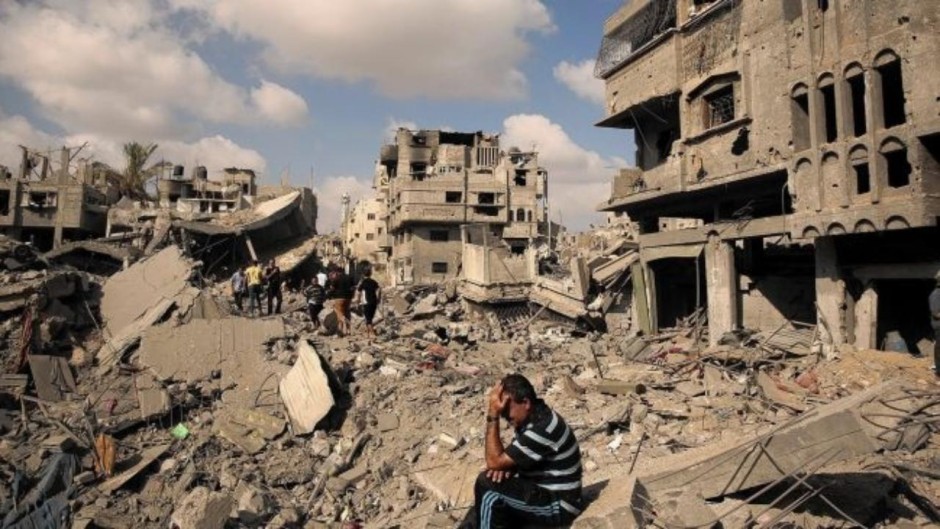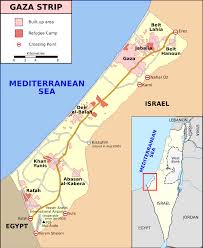A year after the eruption of the third war in seven years between Israel and Hamas, an uneasy calm prevails in the Gaza Strip.
The combatants observe an informal ceasefire, but the truce has been broken by periodic bouts of cross-border fighting, most recently last month, and both sides are preparing for a new round of hostilities
Last summer’s war, which lasted from July 7 to August 26, basically ended in a draw, with neither side able to subdue the other. But it was a costly conflict in terms of human lives, certainly more bloody than the 2008-2009 war (Operation Cast Lead) or the 2012 war (Operation Pillar of Defence).
Last year’s war resulted in the deaths of 2,251 Palestinians, 73 Israeli soldiers and civilians and one foreign worker in Israel. Israeli casualties probably would have been higher had it not been for the Iron Dome anti-ballistic system — which intercepted about 85 percent of Hamas rockets homing in on Israeli cities — and the elaborate network of bomb shelters.
The war had a devastating impact on Gaza, which has been under Hamas control since it ousted the Palestinian Authority in a violent coup in 2007. Thousands of Palestinian homes were destroyed, displacing some 100,00 civilians. Damage to infrastructure was significant, leaving Gaza in shambles.
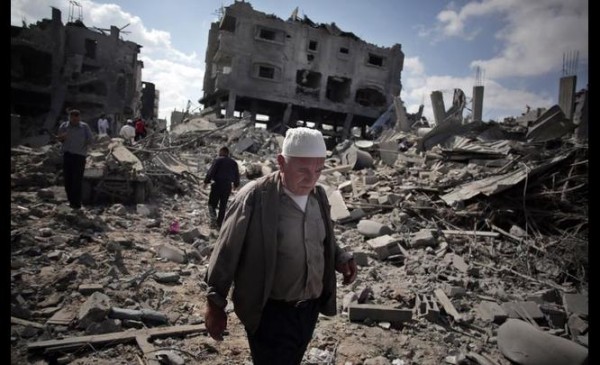
Much to the misfortune of Gaza’s civilians, reconstruction efforts have faltered, stymied by Hamas’ intense rivalry with the Palestinian Authority, border closures by Israel and Egypt, and the failure of international donors to completely follow through with financial aid. By all accounts, less than one-third of the $5.4 billion pledged at a 2014 donor conference in Cairo has been delivered.
Gaza’s travails have been exacerbated by Egypt. The Egyptian army has closed some 1,600 Palestinian smuggling tunnels, which provided the Hamas regime with a steady stream of income from taxes and enabled its residents to buy relatively inexpensive contraband fuel and construction materials. Mired in insolvency, Hamas has been unable to pay 40,000 civil servants their salaries on a regular basis.
According to a recent World Bank report, Gaza’s unemployment rate stands at 44 percent, 11 points higher than before the war. The jobless rate for youths, 60 percent, is unmatched anywhere in the Middle East. Forty percent of its 1.8 million inhabitants live below the poverty line and around 80 percent are dependent on welfare.
The situation would be far worse if Israel and Egypt kept the Gaza border crossings permanently shuttered.
But Israel maintains a maritime blockade of Gaza and has done so since 2007, when Hamas replaced the Palestine Authority as the governing body. Israel justifies the siege on the grounds that Hamas seeks its annihilation and continually carries out attacks against its territory and citizens.
Nonetheless, Israel has allowed 1.1 million tons of reconstruction materials, including cement, to pass into Gaza since last September, despite concerns that Hamas will misuse them for military purposes.
In spite of persistent efforts by pro-Palestinian activists to break the blockade, Israel has no plans to lift it. On June 29, Israel’s navy intercepted the Swedish vessel Marianne en route to Gaza and guided it to the Israeli port of Ashdod. As a result, the three other boats in the flotilla turned back, scuttling the entire mission.
Although Israel remains in a technical state of war with Hamas, an offshoot of Egypt’s Muslim Brotherhood, the Israeli government no longer seems interested in toppling its Islamic fundamentalist government.
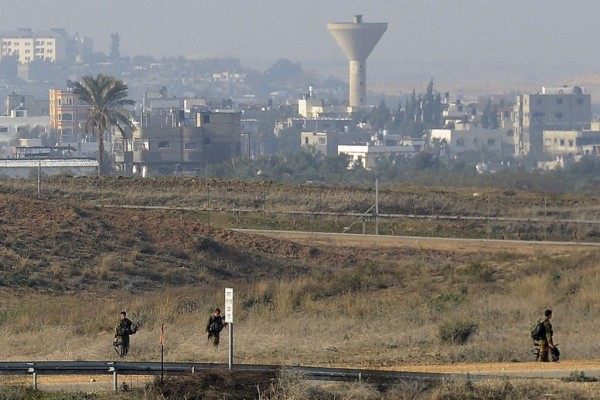
During last year’s 50-day war, dubbed Operation Protective Edge, Avigdor Liberman, the then foreign minister, called for a fullscale invasion to uproot Hamas once and for all. Of late, however, Israel appears to be hewing to a policy of containment, regarding Hamas as a lesser evil compared to militant groups in Gaza loyal to Islamic State, the world’s most important Sunni jihadist organization.
Ultra-conservative groups in Gaza to the right of Hamas have accused Hamas’ leadership of being too soft on Israel and too lax in enforcing religious laws. And while the Salafists may pose something of a threat to Hamas’ legitimacy, Hamas largely tolerates them. But in 2009, Hamas arrested a Salafist imam who had declared an emirate in the southern town of Rafah. In a melee, 20 of his supporters were killed by Hamas security forces.
There are an estimated 1,000 Salafists in Gaza, and they have pledged their allegiance to Islamic State, which recently released a video promising to “uproot the state of the Jews” and depose “Hamas dictators.”

Due to their presence, Israel has modified its attitude to Hamas. The shift in Israel’s policy was expressed by General Shlomo Turgeman, the regional commander of the Israeli army in the southern district, two months ago.
Asked whether Israel should have tried to topple Hamas last summer, he replied, “There is an independent rule in Gaza that behaves like a state. Inside that state is a ruler, Hamas. At the moment, there is no alternative to Hamas. Aside from that, there is no one else who can holds things together. The alternative is the IDF — the Israel Defence Force — or chaos.”
Turgeman’s formula has been adopted by no less a politician than Education Minister Naftali Bennett, the leader of the far right-wing Jewish Home Party, which has called for the dismantlement of the Hamas entity in Gaza. Last week, Bennett sang a new tune, acknowledging that Hamas is a “reality” in Gaza. “I see that they are there,” he observed.
Tellingly enough, Turgeman did not bother explaining why the Palestinian Authority is not a viable alternative to Hamas, which is still considered a terrorist organization by Israel.
Under the reconciliation agreement signed by the Palestinian Authority and Hamas in 2014, the Palestinian Authority was supposed to reestablish itself in Gaza and take charge of reconstruction there. But in practice, Hamas has blocked its reentry into Gaza.
Given these circumstances, no one should be surprised by the news that direct or indirect negotiations have been taking place between Israel and Hamas for the last few months. This has been confirmed by Mahmoud Abbas, the president of the Palestinian Authority, and by Ahmad Yousef, a Hamas spokesman.
Reports suggest that Qatar and Turkey, both of which look favorably upon Hamas, have been working to achieve a long-term ceasefire. In the immediate aftermath of the war, Egypt tried but fail to hammer out a formal truce.
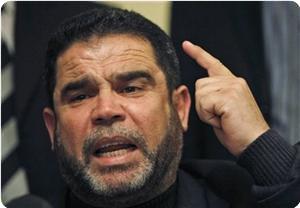
Salah Bardawil, a Gaza-based Hamas spokesman, told an Egyptian daily newspaper in early June that Hamas is satisfied with the informal ceasefire. “The Hamas movement does not want escalation with Israel,” he said. “It is interested in calm.”
Salafists at loggerheads with Hamas have violated the truce, having fired a barrage of rockets and mortars into Israel in June. In the meantime, Hamas has been rebuilding its military capabilities. On June 30, Yoram Cohen, the director of Israel’s Shin Bet internal security service, told a Knesset committee that Hamas, supported by Iran, has been building new attack tunnels, producing fresh batches of rockets and training ground and naval forces for the next war.
On the same day, Ismail Haniyeh, Hamas’ de facto political leader, boasted that Hamas’ armed wing, the Izz ad-Din al-Qassam Brigades, is stronger than ever.
It’s clear that Hamas, along with Islamic Jihad and other groups, are rearming and beefing up their offensive capabilities. Yet Israel is also girding for a fourth war, having fortified kibbutzim and moshavim close to the border. In a recent disclosure, Israel announced it will soon deploy a revolutionary new tunnel detection system to better protect its citizens from terrorist infiltration.
The more things change, the more they remain the same.
